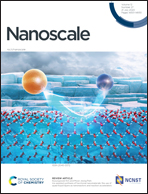Configuring hierarchical Ni/NiO 3D-network assisted with bamboo cellulose nanofibers for high-performance Ni–Zn aqueous batteries†
Abstract
The further application of Ni–Zn aqueous batteries is majorly restricted by nickel-based cathodes due to their low capacity and poor cycling stability, which requires the development of hierarchically nanostructured nickel and nickel oxides. Herein, we prepare a novel nickel-based electrode with hierarchical 3D networks by configuring nanostructured Ni and Ni/NiO nanoparticles onto bamboo-derived cellulose nanofibers (denoted as Ni/NiO-BCF). Owing to the high conductivity of carbonized nanofibers and enhanced Ni/NiO active sites exposed, the Ni/NiO-BCF electrode delivers a capacity of 248 mA h g−1 at 0.625 A g−1 and exhibits a good cycling stability (94.5% after 2000 cycles). The as-fabricated Ni/NiO-BCF//Zn battery shows a high capacity of 296 mA h g−1 at 0.625 A g−1 and excellent cycling stability (almost no decay after 1000 cycles). Notably, a peak energy density of 313.4 W h kg−1 is also achieved from the Ni/NiO-BCF//Zn battery. This work provides novel insights into developing elaborately-nanostructured electrodes from natural and sustainable resources for high-capacity and long-cycle energy storage systems.



 Please wait while we load your content...
Please wait while we load your content...